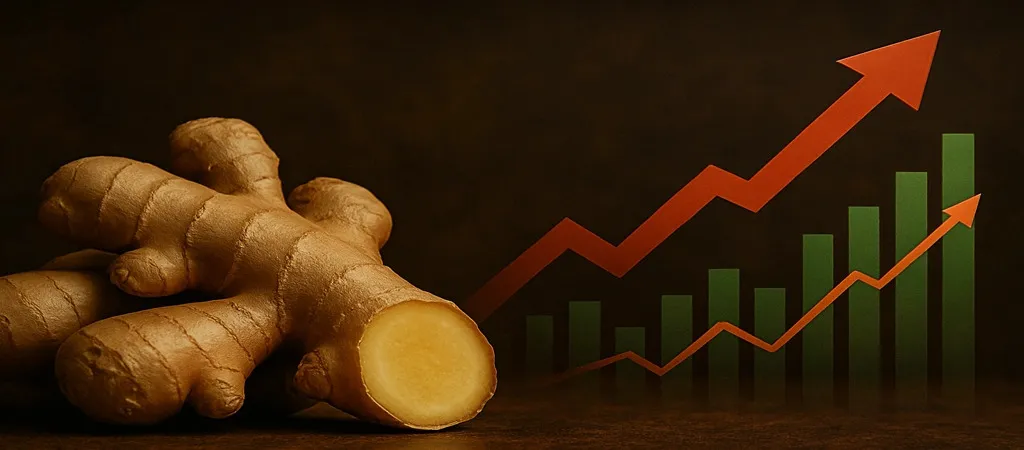Market Overview
Up to July 2025, the world market for ginger continues to be extremely volatile due to weather, disease, and geopolitical issues. Such pressures have established changing supply and demand patterns, impacting prices worldwide.

Price Trends
India: Prices of fresh ginger have fallen in major production regions like Kerala and Delhi due to normal supplies and poor demand. In Kochi, for instance, grade dry ginger is currently being sold at $2.76–$3 per kg, a sharp increase from earlier in the year. In the general market, however, prices fell, thereby making ginger cheaper but difficult for producers.
Nigeria: The price of ginger has increased six times over two years, from N50,000 per bag in 2023 to N300,000 in 2025. This was as a result of low supply following the devastating 2023 ginger blight disease, which resulted in a N12 billion loss to Nigerian farmers.
India, Mizoram: Ginger prices dropped to Rs 28 a kg in Delhi and even to Rs 17 a kg in Silchar and Siliguri due to the shutdown of the India-Bangladesh border during the India-Pakistan war. This break caused a severe loss of exports, which led to financial distress for farmers who had made large investments in ginger cultivation.

Supply and Demand Dynamics
India: Monsoon has caused a significant delay in the arrival of fresh ginger, leading to moderate but consistent price gains in dry and fresh ginger markets. Wholesale prices have increased by $0.02–$0.06 per kg, and they now trade at $0.50–$0.68 per kg in general markets. High-quality dry ginger is trading at $2.76–$3 per kg in Kochi after increasing by $0.18–$0.30 per kg.
Mizoram, India: The ZPM government has purchased over 1.1 lakh quintals of ginger under its 'Bana Kaih' program since February 20 at a price over Rs 58.08 crore. However, the shutdown of the India-Bangladesh border brought exports to a standstill, and the price of ginger crashed.
Market Outlook
The global ginger market was approximately USD 3.6 billion during the year 2023 and is projected to reach USD 5.4 billion during the year 2032, growing at a CAGR of 4.7% from 2023 to 2032. The market is boosted by growing health consciousness among customers, growing use of ginger in the food industry, and its growing demand as a functional food ingredient.
New Applications and Innovations
Ginger's versatility remains the main cause of its increased use in various industries:
Health and Wellness: The anti-inflammatory and digestive nature of ginger has led to ginger being used in an incredible range of health-related supplements and functional foods. With consumers increasingly looking for natural remedies, ginger-based products are more in demand.
Food and Beverage: Ginger is increasingly being used in food and beverage items like ginger-flavored beverages, snacks, and condiments. The unique flavor of ginger enjoys broad consumer acceptability, which is fueling market demand.
Pharmaceuticals: The pharmaceutical industry is now utilizing the medicinal properties of ginger, and it is being integrated into various therapeutic products. Scientific research on its bioactive compounds continues to uncover further potential health advantages.
Global Trade and Export Matters
Ginger prices and supply are being influenced by international trade flows:
Export Restrictions: Countries like India are facing export difficulties due to geopolitical tensions and export restrictions. Export bans and border closures have disrupted supply chains, leading to price fluctuations in global markets.
Market Diversification: The producers seek new markets so as to minimize risks of over-reliance on traditional export markets. Diversification of export markets can stabilize prices and ensure stable demand.

Conclusion
The ginger market 2025 is characterized by price fluctuations across regions for various reasons. While some regions are experiencing price increases due to shortages in supply, others also struggle with political instability and disease outbreaks. Agricultural decision-makers need to closely monitor these trends to make production, pricing, and marketing decisions.









